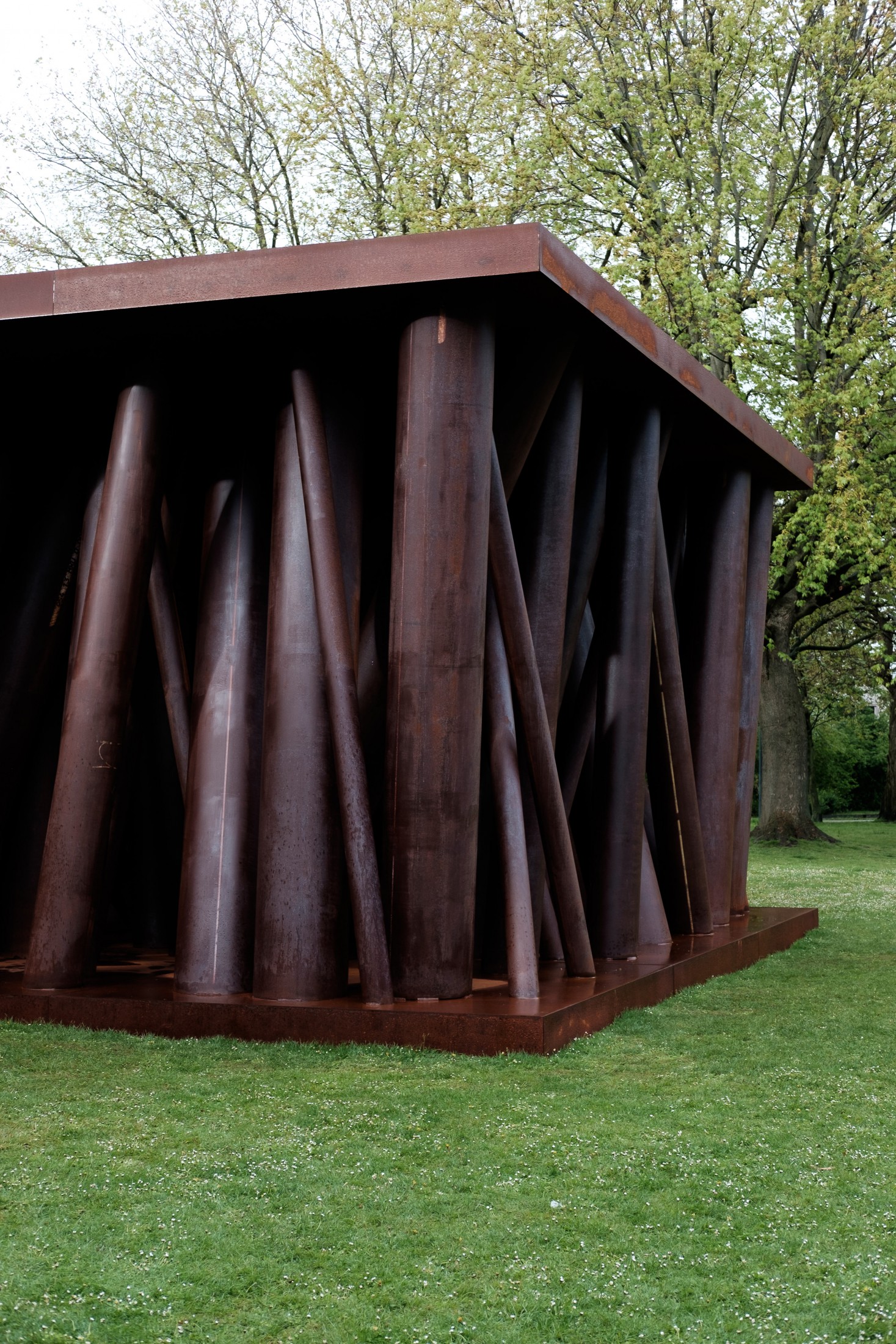A Giant Sculpture
A varied landscape with coniferous forests on sandy soil, with moors, fens, open sand drifts, hollow roads and streams. This unique nature reserve is rich in mystical stories dating back to pre-Christian cultures. Gijs Van Vaerenbergh placed A Giant Sculpture on the highest point of the ridge, on the 30 m high dormant land dune of the Hoge Mouw in Kasterlee.
This permanent structure has been designed especially for the site, and comprises a faceted head made up of 2,115 welded-together 6 mm metal triangles in the form of a dome. Pieces have been cut out in places and you can walk into the hollow space within the sculpture from one side. The colossus measures 6 x 5 x 3 m and weighs around 2 tonnes, its size bringing to mind excavated fragments of sculptures from ancient times. The work thus toys with art-historical and site-specific references that spring from the extraordinary nature of the place, whilst at the same time forming a new, alien element in the landscape that fuels the creation of new myths.
From the forest, the visitor enters the open, sunken spot where the monumental head lies. The head, appearing as if it has just been uncovered while the rest of the body remains hidden under the surface, rises from the dune like a vestige of ancient times. Its face has the classical features of goddesses found in Greek sculpture, and is also reminiscent of excavated fragments of ancient sculptures of gigantic dimensions.
The work is exemplary of Gijs Van Vaerenbergh’s characteristic play with meaning; whether in an art-historical respect, or as an allusion to the site-specific stories that are rooted in the extraordinary nature of the place. The placement of this new, uncanny element furthers the mythicalisation of this very particular landscape.
Discover more work by Gijs Van Vaerenbergh.










